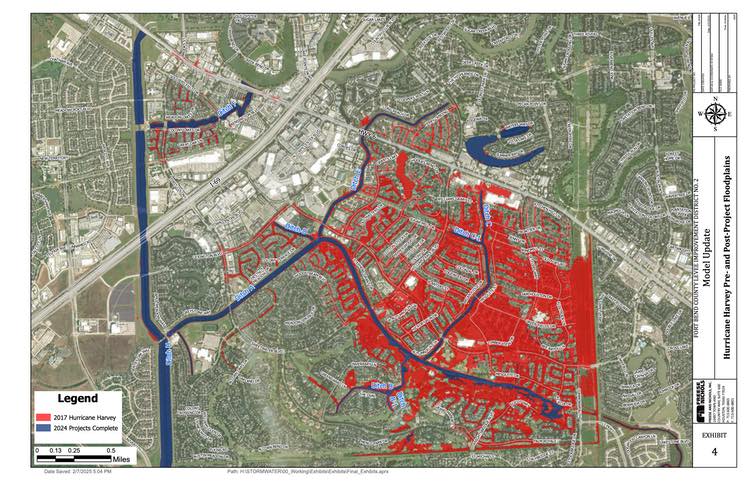FBCLID 2 recently updated the computer models that analyze the impact of rainfall on the drainage system inside the levee. The models were updated to incorporate the $85 million capital improvement program that received the 2024 John Ivey Higher Standards Award from the Texas Floodplain Management Association (TFMA).
Immediately following Hurricane Harvey, FBCLID 2 used computer modeling to analyze the sources of flooding inside the levee and to design improvements to prevent them from reoccurring. For instance, the information gained from modeling helped determine the size of the new pump stations and estimated the benefits of drainage channel improvements. Now that all Hurricane Harvey improvement projects are complete, the model was updated to reflect actual conditions instead of proposed improvements. The end result is confirmation that the $85 million investment in drainage improvements provided the expected results for FBCLID 2 and its residents. The red-shaded areas on the map indicate the maximum extent of flooding during Hurricane Harvey. The blue-shaded areas estimate the extent of flooding if all FBCLID 2 capital improvements were in place during Hurricane Harvey. The only flood prone areas indicated in blue lie within existing drainage channels or golf course drainage easements.
FBCLID2 residents should note that street flooding is still possible and very likely during periods of intense, heavy rainfall. The streets in FBCLID 2 are designed to hold water when storm sewer inlets in the street are overwhelmed by heavy downpours. However, with additional pump and flood storage capacity, the FBCLID 2 drainage channels will stay at lower levels during heavy rains. City street drains and storm sewers may still back up during heavy rain, but overall will perform better as a result of the FBCLID 2 improvements.

